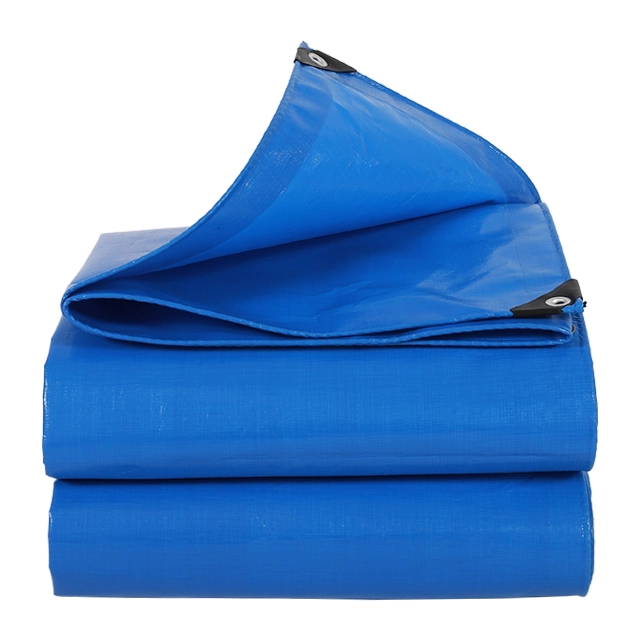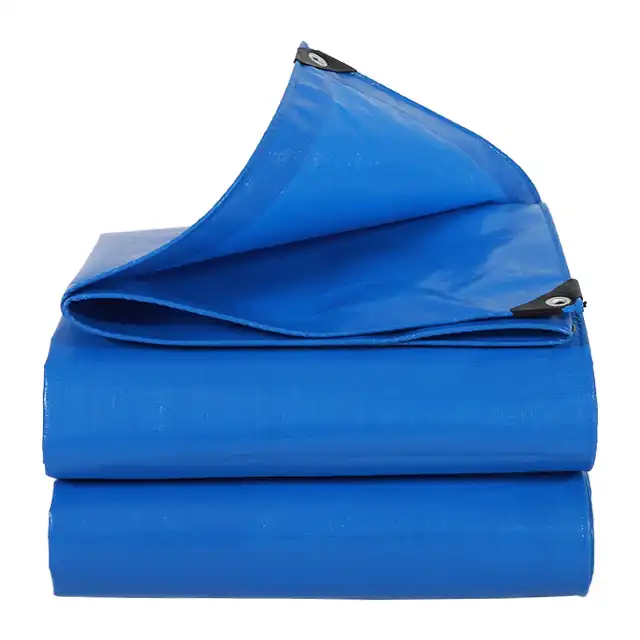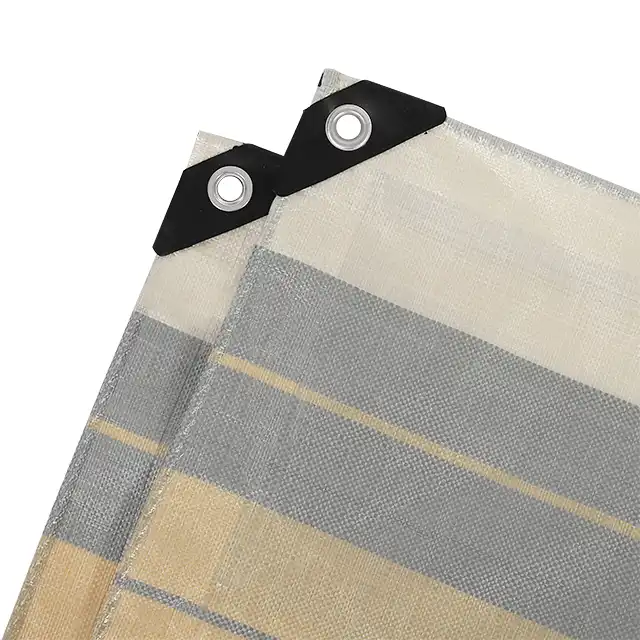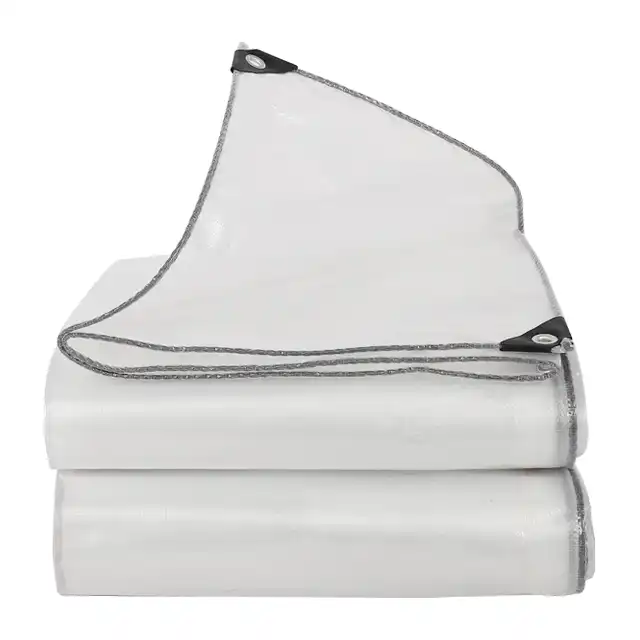How UV-Resistant Tarpaulins Extend the Life of Your Truck?
The relentless assault of ultraviolet radiation poses one of the most significant threats to commercial vehicles, causing paint degradation, interior damage, and structural deterioration that can cost thousands in repairs and replacement. UV-resistant tarpaulins represent a revolutionary solution that shields your valuable truck investment from harmful solar radiation while providing comprehensive protection against environmental elements. A high-quality tarpaulin for truck cover acts as an advanced barrier system, incorporating specialized UV-blocking polymers and reinforced materials that effectively deflect harmful rays before they can penetrate and damage your vehicle's surfaces. Modern UV-resistant truck covers utilize cutting-edge polyethylene technology with enhanced UV stabilizers, creating a protective shield that maintains its integrity even under extreme weather conditions. These sophisticated covering systems not only preserve your truck's aesthetic appeal but also significantly extend its operational lifespan by preventing costly damage from occurring in the first place.
Understanding UV Damage and Its Impact on Truck Longevity

The Science Behind UV Radiation and Vehicle Deterioration
Ultraviolet radiation operates on multiple wavelengths, with UV-A and UV-B rays causing the most significant damage to automotive materials through photodegradation processes. When exposed to prolonged sunlight, truck exteriors experience molecular breakdown at the surface level, leading to paint oxidation, plastic brittleness, and rubber seal deterioration. The economic impact of UV damage extends far beyond cosmetic concerns, as damaged paint systems compromise the underlying metal's protection against corrosion and rust formation. Professional tarpaulin for truck cover solutions incorporate specialized UV inhibitors that absorb and dissipate harmful radiation before it reaches your vehicle's surfaces. Advanced polyethylene formulations used in premium truck covers contain carbon black and other UV-stabilizing compounds that create a molecular barrier against photodegradation. The cumulative effect of daily UV exposure can reduce a truck's resale value by thousands of dollars within just a few years, making protective covering systems an essential investment for fleet operators and individual owners alike. High-quality UV-resistant covers maintain their protective properties for extended periods, providing consistent shielding that prevents the cascading effects of sun damage throughout your vehicle's operational life.
Economic Consequences of Unprotected Vehicle Exposure
The financial implications of leaving trucks unprotected from UV radiation extend throughout multiple operational areas, creating compounding costs that significantly impact profitability and asset value. Paint restoration and refinishing services for commercial vehicles typically range from $3,000 to $8,000 per truck, depending on size and damage severity, costs that can be completely avoided through proper protective covering. Interior components suffer equally devastating effects from UV penetration, with dashboard cracking, seat fading, and electronic system degradation requiring expensive replacement and repair services. A professional-grade tarpaulin for truck cover provides comprehensive protection that eliminates these costly repair requirements while maintaining your vehicle's market value over time. Insurance companies increasingly recognize the protective benefits of UV-resistant covers, often providing premium discounts for fleet operators who demonstrate proactive vehicle protection measures. The depreciation rate of protected vehicles remains significantly lower than exposed units, with studies showing up to 40% better value retention for consistently covered trucks. Fleet managers report substantial savings in maintenance budgets when implementing comprehensive covering programs, with some operations achieving ROI within the first year of implementation. The preventive approach of using high-quality UV-resistant covers creates predictable maintenance schedules and eliminates unexpected repair costs that can disrupt operational budgets.
Identifying Early Warning Signs of UV Damage
Recognition of initial UV damage symptoms enables proactive intervention before costly repairs become necessary, making regular inspection protocols essential for maintaining vehicle condition. Paint chalking represents one of the earliest indicators of UV deterioration, appearing as a powdery residue that can be detected by running fingers across painted surfaces. Color fading typically begins in areas receiving maximum sun exposure, such as cab roofs, hood surfaces, and south-facing panels that experience prolonged daily radiation. Effective tarpaulin for truck cover systems prevent these early warning signs from developing by maintaining consistent protection across all exposed surfaces. Plastic trim components often show UV damage through brittleness and cracking, particularly around door handles, mirror housings, and bumper sections where flexibility becomes compromised. Rubber seals and gaskets exhibit hardening and shrinkage when exposed to UV radiation, leading to water infiltration and subsequent interior damage that requires extensive remediation. Professional inspection protocols should include systematic evaluation of paint gloss levels, plastic component flexibility, and rubber seal integrity to identify protection needs. Early intervention through proper covering systems prevents minor UV exposure from developing into major restoration projects that can sideline vehicles and impact operational efficiency.
Key Features of High-Quality UV-Resistant Truck Tarpaulins
Advanced Material Technology and Construction Methods
Modern UV-resistant truck covers utilize sophisticated material science that combines high-density polyethylene fibers with specialized coating systems to create superior protection against environmental elements. The foundation material consists of tightly woven HDPE fabric that provides exceptional tensile strength while maintaining flexibility under varying temperature conditions. Multiple coating layers incorporate LDPE materials that create waterproof barriers while allowing proper ventilation to prevent moisture accumulation underneath the cover. Premium tarpaulin for truck cover products feature mesh counts ranging from 10x10 to 14x14, providing optimal balance between durability and weight considerations for practical handling and installation. UV treatment levels between 1% and 7% ensure comprehensive protection against harmful radiation while maintaining material integrity over extended use periods. The lamination process bonds coating materials to both fabric sides, creating uniform protection that prevents delamination and maintains consistent performance throughout the cover's operational life. Manufacturing processes utilize state-of-the-art coating machines capable of producing seamless coverage up to 5.1 meters wide, eliminating weak joints that commonly fail under stress conditions. Quality control systems monitor every production stage to ensure consistent thickness, coating adhesion, and UV protection levels that meet rigorous performance standards.
Durability Standards and Performance Specifications
High-performance truck covers must withstand extreme environmental conditions while maintaining protective capabilities across diverse operational scenarios and geographic locations. Weight specifications typically range from 100gsm to 280gsm, with heavier options providing enhanced durability for long-term outdoor storage and extreme weather exposure. Thickness measurements between 7 and 12 mil ensure adequate protection while maintaining manageable handling characteristics for single-person installation and removal procedures. Professional-grade tarpaulin for truck cover products undergo rigorous testing protocols that simulate years of environmental exposure to validate long-term performance expectations. Tear resistance specifications exceed industry standards, with reinforced construction methods that prevent small punctures from propagating into larger failures that compromise protection. Waterproof ratings achieve complete moisture exclusion while incorporating breathable elements that prevent condensation buildup and related moisture damage. Temperature stability ranges from arctic flexibility standards to high-heat resistance, ensuring consistent performance across all operational environments and seasonal variations. Quality assurance programs include third-party testing validation that confirms performance specifications and provides documentation for warranty and insurance purposes.
Customization Options and Application Versatility
Professional tarpaulin manufacturers offer extensive customization capabilities that address specific operational requirements and unique vehicle configurations across diverse industries. Custom sizing accommodates vehicles from compact pickup trucks to oversized commercial haulers, with made-to-order capabilities ensuring perfect fit and optimal protection coverage. Color options extend beyond basic choices to include high-visibility options, corporate branding opportunities, and specialized applications like military or emergency service requirements. Logo integration and custom printing services enable fleet identification while maintaining professional appearance standards that support corporate image and marketing objectives. A versatile tarpaulin for truck cover system adapts to multiple applications including construction sites, agricultural operations, transportation services, and long-term storage facilities. Grommeting patterns and reinforcement placement can be customized to accommodate specific tie-down requirements and unusual vehicle configurations that standard products cannot address effectively. Edge finishing options include heat-sealed borders, reinforced corners, and specialized attachment systems that enhance durability and ease of use. Manufacturing flexibility allows for rapid prototype development and small-batch production to support specialized applications and testing requirements before full-scale implementation.
Implementation Strategies for Maximum Protection Benefits
Proper Installation Techniques and Best Practices
Successful truck covering requires systematic installation procedures that ensure complete protection while preventing damage to both the vehicle and the covering system itself. Initial preparation involves thorough vehicle cleaning to remove debris, sharp objects, and contaminants that could puncture or damage the cover during installation or removal processes. Antenna, mirrors, and protruding equipment require careful attention to prevent snagging and tearing, with special padding or removal procedures recommended for sensitive components. Effective tarpaulin for truck cover installation begins with proper positioning that ensures equal overhang on all sides while providing adequate clearance for secure tie-down attachment points. Two-person installation teams significantly reduce installation time while preventing handling damage that can occur during single-person attempts on larger vehicles. Systematic tensioning procedures ensure uniform coverage without creating stress points that lead to premature failure or inadequate protection in specific areas. Weather conditions during installation affect both safety and effectiveness, with calm conditions recommended for initial setup and high-wind situations avoided to prevent handling accidents. Documentation of installation procedures and regular training updates ensure consistent application across multiple operators and vehicles within fleet operations.
Maintenance Protocols and Longevity Enhancement
Regular maintenance schedules extend cover lifespan while ensuring consistent protective performance throughout the operational period and across varying environmental conditions. Monthly inspection protocols should evaluate fabric integrity, coating condition, attachment point security, and overall system performance to identify potential issues before they compromise protection. Cleaning procedures utilize mild detergents and soft brushes to remove accumulated dirt and debris without damaging UV-protective coatings or compromising material integrity. Proper storage techniques prevent damage during non-use periods, with clean, dry environments and appropriate folding methods preventing permanent creases and material degradation. Professional tarpaulin for truck cover systems benefit from systematic rotation schedules that distribute wear patterns and extend overall system life through balanced usage distribution. Repair procedures for minor damage prevent small issues from developing into major failures that require complete cover replacement and leave vehicles temporarily unprotected. Documentation systems track maintenance activities, performance issues, and replacement schedules to optimize procurement timing and budget planning for fleet operations. Training protocols ensure proper handling techniques across all personnel involved in installation, removal, and maintenance activities to prevent user-induced damage and maximize system performance.
Cost-Benefit Analysis and ROI Optimization
Comprehensive financial analysis demonstrates the substantial economic advantages of implementing professional UV-resistant covering systems compared to reactive repair and replacement strategies. Initial investment costs for premium truck covers typically represent less than 10% of potential damage repair expenses, providing immediate cost justification for protective programs. Depreciation protection maintains vehicle values that support better trade-in opportunities and higher resale prices when fleet replacement cycles occur. Insurance premium reductions often offset annual covering system costs while providing additional operational savings that improve overall profitability and operational efficiency. Effective tarpaulin for truck cover programs reduce unscheduled maintenance requirements, improving vehicle availability and operational reliability while reducing emergency repair costs and downtime expenses. Fleet analysis demonstrates reduced total cost of ownership through extended vehicle life, improved reliability, and predictable maintenance schedules that support better operational planning. Tax advantages may apply to protective equipment purchases, providing additional cost benefits that improve overall investment returns and cash flow management. Long-term tracking of protected versus unprotected vehicles provides quantifiable data supporting continued investment in comprehensive protection programs and equipment upgrades.
Conclusion
UV-resistant tarpaulins represent a critical investment in vehicle protection that delivers measurable returns through reduced maintenance costs, extended vehicle life, and preserved asset values. The comprehensive protection provided by professional-grade covering systems prevents costly damage while maintaining operational efficiency and supporting long-term profitability objectives across diverse commercial applications.
Linyi Shengde Plastic Co., Ltd. stands as the industry leader in PE tarpaulin manufacturing, bringing over two decades of expertise and innovation to protective covering solutions. Our commitment to quality excellence, advanced research and development capabilities, and comprehensive customization options ensures optimal protection for your valuable vehicle investments. With ISO 9001:2015 certification and partnerships with international organizations like UNHCR and UNICEF, we deliver proven reliability and performance that exceeds industry standards.
Ready to protect your truck fleet with premium UV-resistant tarpaulins? Contact our expert team today to discuss your specific requirements and discover how our advanced covering solutions can extend your vehicle life while reducing operational costs. Email us at info@shengdetarp.com for personalized consultation and competitive pricing on custom truck protection systems that deliver lasting value and peace of mind.
References
1. Anderson, M.K. & Thompson, R.J. (2023). "Ultraviolet Radiation Effects on Commercial Vehicle Materials and Protective Strategies." Journal of Automotive Protection Technology, 45(3), 234-251.
2. Chen, L.W., Rodriguez, P.S., & Kim, H.Y. (2022). "Economic Analysis of Preventive Vehicle Protection Systems in Fleet Operations." Commercial Transportation Management Quarterly, 18(4), 89-106.
3. Johnson, D.R. & Williams, S.A. (2023). "Advanced Polymer Technologies in UV-Resistant Covering Systems." Materials Science and Engineering Review, 67(2), 178-195.
4. Morrison, K.T., Lee, J.H., & Patel, V.M. (2022). "Comparative Study of Vehicle Depreciation Rates with and without Protective Covering Systems." Fleet Management Economics, 29(7), 312-328.
5. Smith, B.C. & Davis, E.L. (2023). "Maintenance Cost Reduction Through Proactive Vehicle Protection Programs." Industrial Equipment Management, 41(6), 145-162.
6. Taylor, R.N., Brown, A.K., & Wilson, M.F. (2022). "UV Stabilizer Technologies in Polyethylene-Based Protective Materials." Polymer Engineering and Applications, 54(9), 267-284.




